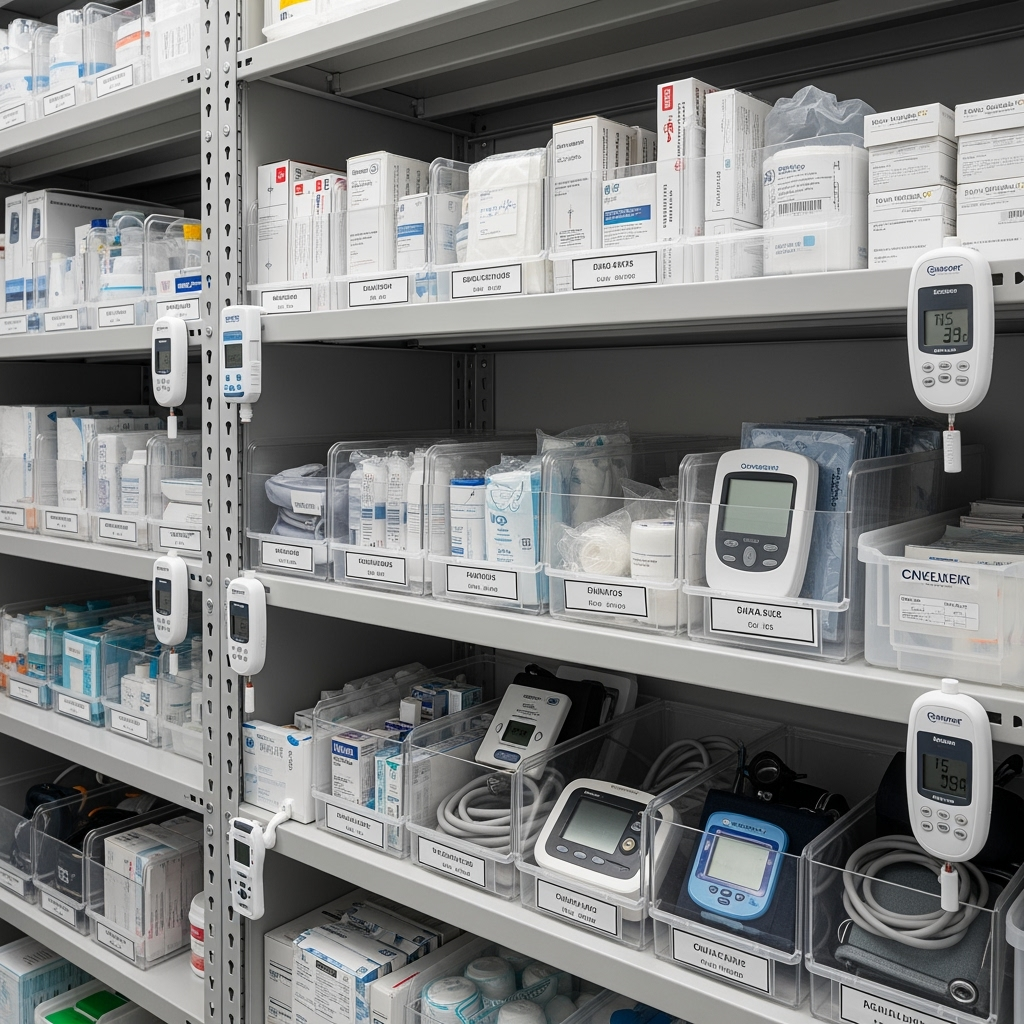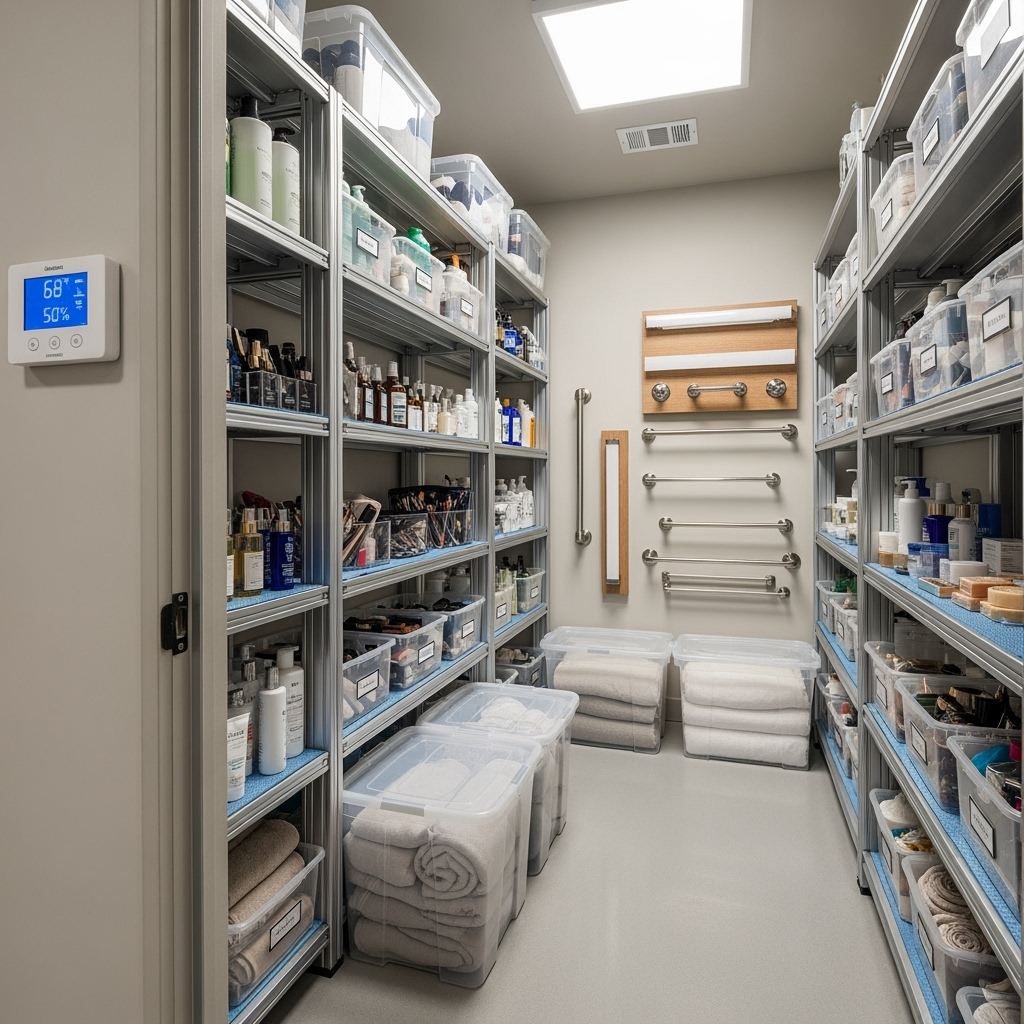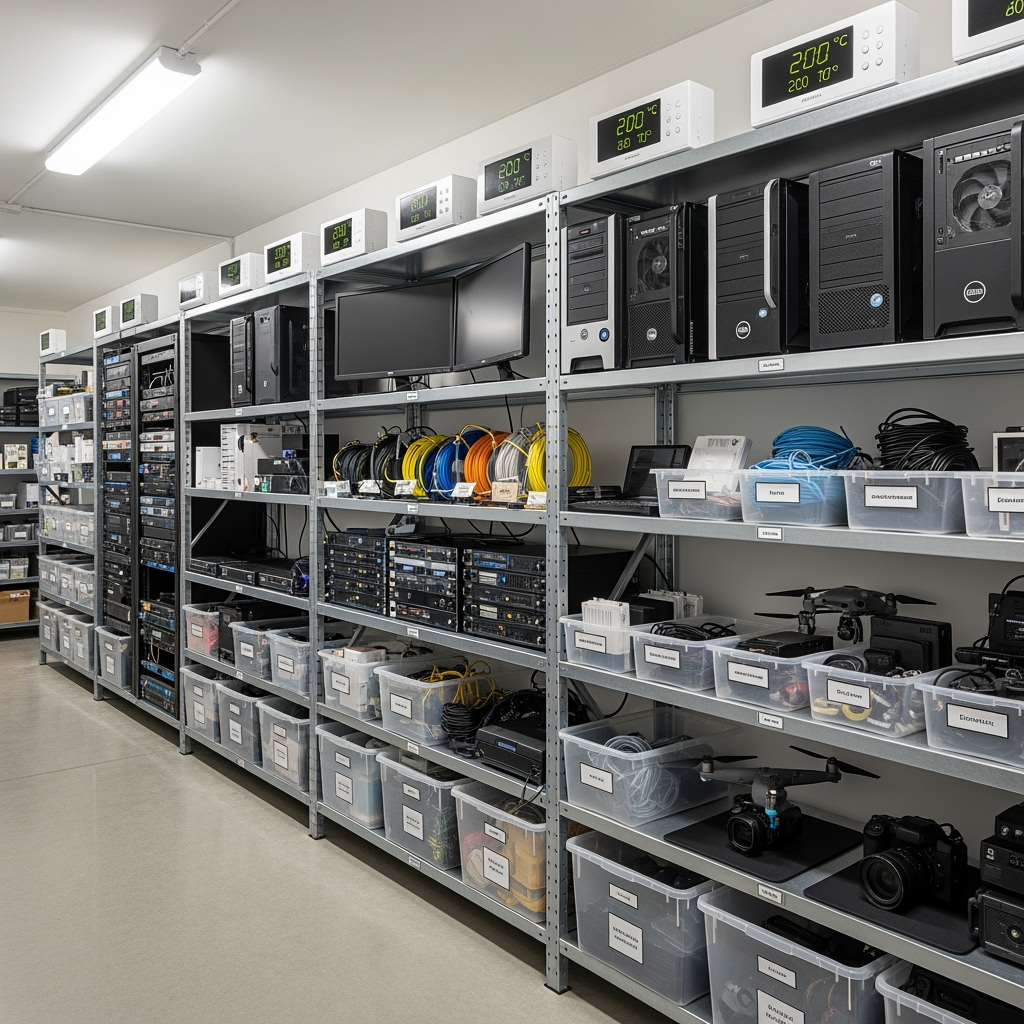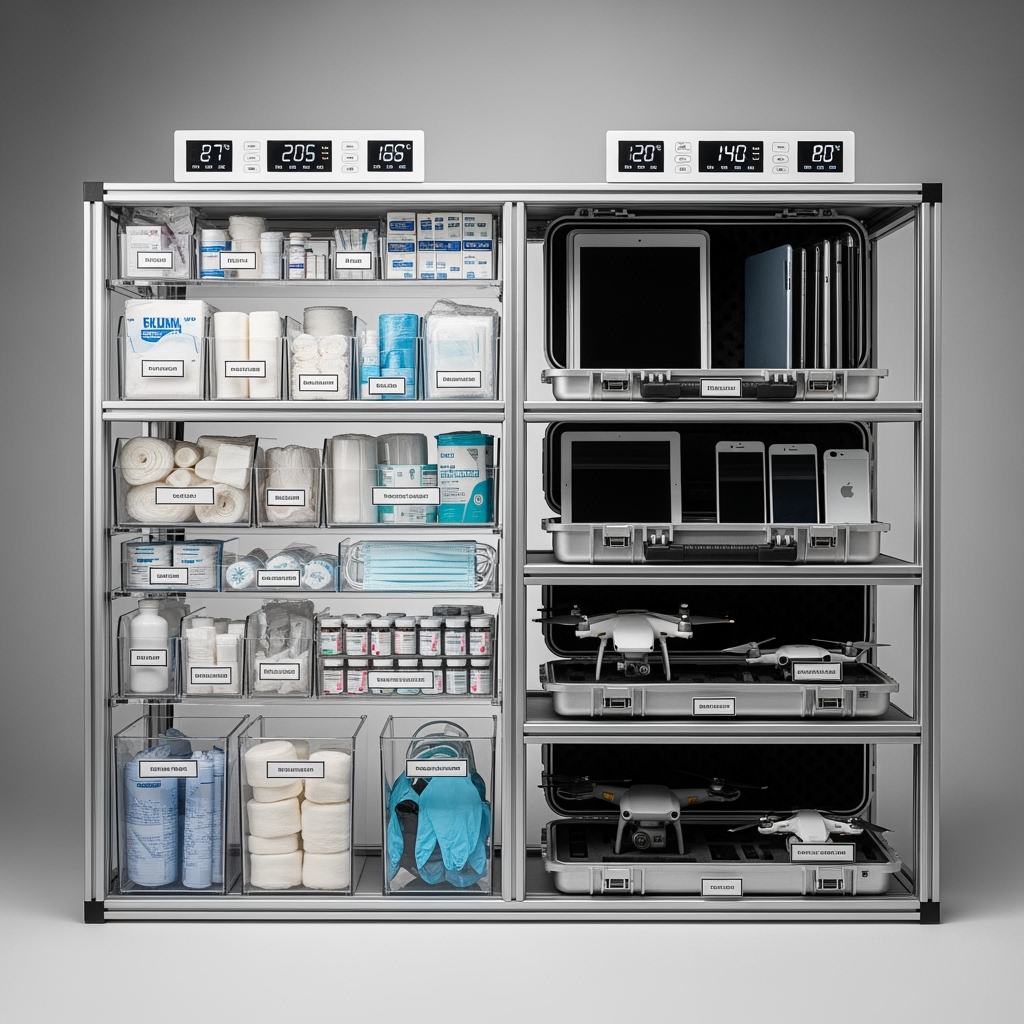The Critical Role of Temperature Control in Pet Medical Supply Storage
For veterinary professionals and pet service providers, maintaining the integrity of medical supplies and medications is crucial for providing quality animal care. Temperature control isn’t just a luxury—it’s a necessity that can mean the difference between effective and compromised treatments.
Understanding Temperature Requirements for Different Pet Medical Supplies
Different veterinary supplies require specific temperature ranges for optimal preservation:
- Vaccines: Most require storage between 35°F and 46°F (2°C to 8°C)
- Medications: Generally need room temperature (68°F to 77°F/20°C to 25°C)
- Diagnostic equipment: Should be kept at consistent room temperature
- Bandages and sterile supplies: Store in cool, dry conditions below 75°F (24°C)
Essential Features of Climate-Controlled Storage for Veterinary Supplies
When selecting a climate-controlled storage solution for pet medical supplies, look for:
- Reliable temperature monitoring systems
- Backup power solutions
- Humidity control features
- Clean, dust-free environment
- Proper ventilation
- Security measures for controlled substances
Organizing Your Climate-Controlled Storage Space
Create an efficient system that prioritizes:
- Easy access to frequently used items
- Clear labeling and inventory tracking
- Separation of temperature-sensitive items
- Proper spacing for air circulation
- Regular monitoring and maintenance schedules
Special Considerations for Mobile Veterinary Services
Mobile veterinarians and traveling pet care providers should consider:
- Portable temperature monitoring devices
- Insulated storage containers for transport
- Backup cooling systems
- Strategic storage unit location selection
Maintaining Compliance and Documentation
Stay professional and compliant by:
- Keeping detailed temperature logs
- Maintaining proper documentation for controlled substances
- Following state and federal regulations for medical storage
- Implementing regular quality control checks
Emergency Preparedness and Backup Plans
Develop contingency plans for:
- Power outages
- Equipment malfunctions
- Extreme weather events
- Emergency supply access
Cost-Effective Storage Solutions
Maximize your investment by:
- Choosing appropriate unit sizes
- Implementing efficient organization systems
- Regular maintenance of storage equipment
- Proper inventory management to prevent waste
Best Practices for Long-Term Storage
Ensure the longevity of your medical supplies with these tips:
- Rotate stock based on expiration dates
- Regular cleaning and sanitization
- Periodic inventory audits
- Updated emergency contact information
Conclusion
Proper temperature-controlled storage is essential for maintaining the quality and effectiveness of pet medical supplies. By following these guidelines and implementing appropriate storage solutions, veterinary professionals can ensure their supplies remain in optimal condition for providing the best possible care to their animal patients.










Leave a Reply